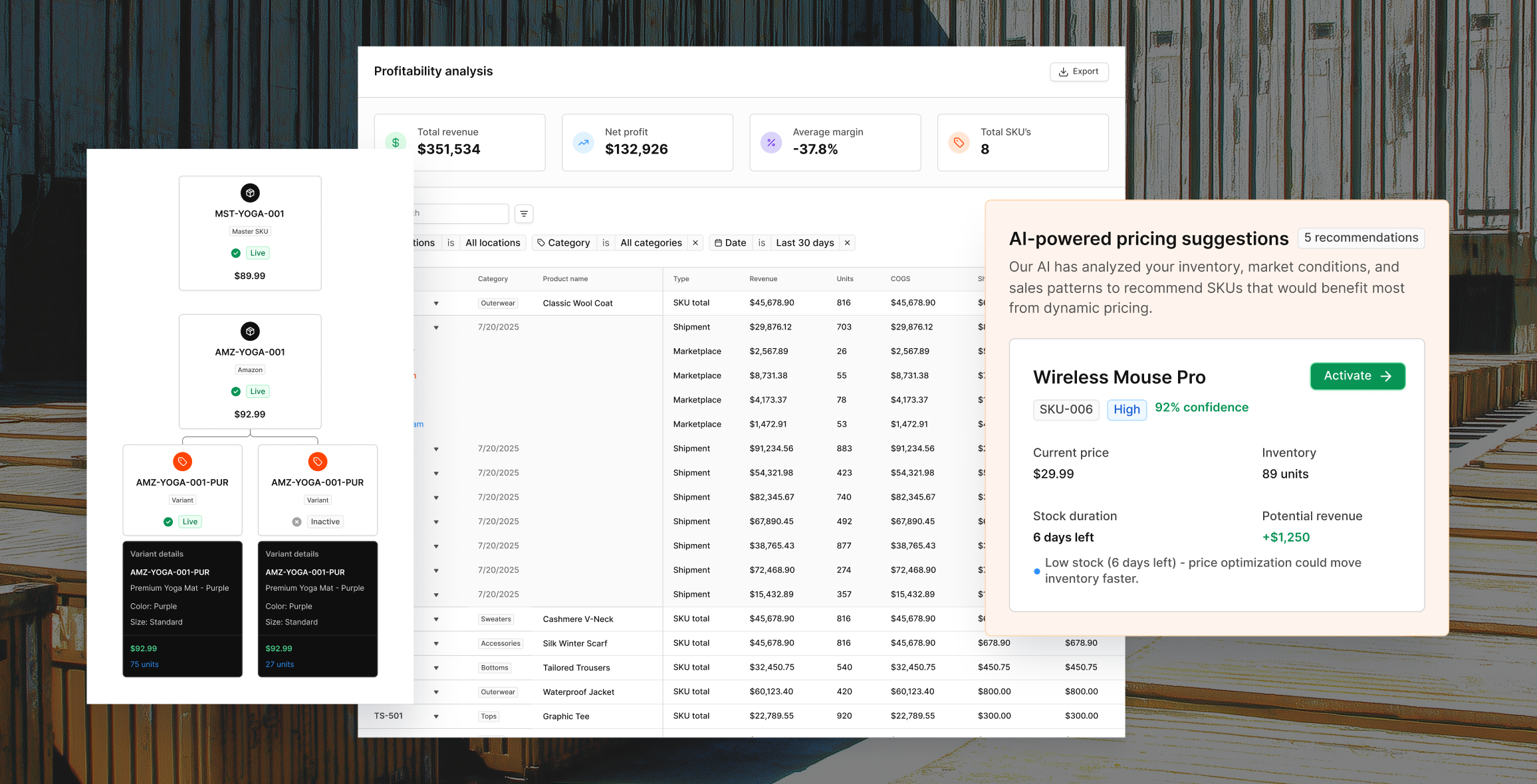What Are Carrier Surcharges and What to Look Out For



Request A Demo
Take 30 minutes to see how Redo can help you retain more revenue through a more cohesive post-purchase experience for your buyers.
If you’re being stung by carrier surcharges, you’re not alone. Fuel, residential, oversize, and peak delivery surcharges are frustrating, unexpected, and becoming more costly by the quarter.
What started as logical fees, such as for fuel when prices spiked, has transformed into a complex web of charges that carriers adjust quarterly, even monthly. For eCommerce brands operating on thin margins, these fees can make the difference between profit and loss on individual orders.
That’s why it’s essential to understand what carrier surcharges are, how they impact your eCommerce deliveries, and what you can do to reduce and avoid them.
What Are Carrier Surcharges
Carrier surcharges are additional fees added to the base cost of a delivery when a shipment falls outside of what a carrier considers “standard shipping.” You may have heard them referred to as delivery or shipping surcharges.
Why are they imposed?
Most carrier surcharges come from a rational place. Oversize and additional handling for example, was implemented because larger or oddly-sized packages can’t travel down a conveyor belt the same way that standard packages could, making them more expensive to process.
eCommerce has also changed the shipping landscape beyond recognition from a decade ago, significantly increasing the number of residential deliveries carriers need to make. While online shopping and home deliveries make life easier for consumers, they’ve made deliveries trickier for carriers. Think more stops, lower density, wider spread, etc.
Carrier surcharges were originally a way for carriers to cover the additional costs involved to stay solvent.
Why are they an issue
The problem with carrier surcharges is that they’re rarely transparent, forever changing, and inconsistently applied. What's more, they’re calculated after a package is processed, which poses a particular challenge for smaller eCommerce brands.
By discovering these fees after the invoice arrives, you’re suddenly running a reactive business that’s unable to adjust pricing strategy, shipping methods, or carrier mix until after the costs have already impacted your bottom line.
The speed at which these surcharges change is another worry. At iDrive, we’ve seen carriers modify their fuel surcharge tables 14 times in the past three and a half years alone. This constant change means that even if you negotiate strong discounts, carriers can still claw back margin through surcharge increases.
Examples of Common Surcharges
Before we look at how to reduce carrier surcharges, let’s take a look at the different types that can affect your business.
Fuel surcharges
One of the most common shipping surcharges is fuel. This is a charge that carriers, including FedEx and UPS, levy on top of existing fuel costs in response to rising fuel prices, regardless of destination, size or weight. It’s also fluid, with increases regularly imposed.
What makes fuel surcharges particularly frustrating is their compounding effect. These percentages don't just apply to your base transportation costs, but are also applied to other surcharges.
So when you get hit with an additional handling fee or residential surcharge, you're also paying the fuel surcharge on top of those fees. This creates a cascading cost structure where a package that should cost $10 to ship might actually cost $15 or more once all surcharges and fuel adjustments are added.
Further reading: Learn more about mitigating fuel surcharges
Residential delivery surcharges
A particularly frustrating surcharge for eCommerce sellers is residential delivery. Many carriers impose an additional fee for deliveries to homes and non-commercial properties due to factors such as spread, volume, stops, and time.
For DTC brands, this surcharge is especially painful because nearly all of your deliveries qualify as residential. Unlike B2B shippers who benefit from dense commercial stops (think shopping malls and retail parks), direct-to-consumer businesses absorb this fee on every single package.
When shipping thousands of orders monthly, even a small residential surcharge can quickly add up, potentially costing you thousands of dollars extra.
Delivery density surcharges
A delivery density surcharge covers DAS (delivery area surcharge), EDAS (extended delivery area surcharge), and remote area surcharges. These are typically applied to remote or rural locations, and further penalize low-volume areas due to higher fuel consumption and longer routes.
What makes this worse is how frequently carriers reassign zip codes to different surcharge tiers. A zone that was standard last quarter might suddenly become an extended delivery area, increasing your costs without any change to your operations.
Demand or peak surcharges
Demand surcharges (also known as peak surcharges) are applied during busy seasons or when there’s an unexpected spike in volume, and are designed to offset the carrier’s higher operational costs.
Typically, these apply during:
- The holiday period: November through mid-January
- Sales events: Black Friday, Cyber Monday, Prime Day
- Supply chain disruptions: Adverse weather, strikes, fuel shortages
“Peak” surcharges are often an amalgamation of multiple other surcharges that all increase around the peak season, when carriers are trying to encourage shippers to ship early and avoid overwhelming the carrier infrastructure. This is also when you’ll see oversize charges spike dramatically, because carriers want to save that space for more packages during high-volume times.
We are also seeing some carriers rebrand “peak” into “demand” surcharges, which is an indicator that they will begin adjusting the timeframe when these surcharges are imposed. Whereas peak implies November through January (locked to a season), demand can be freely dictated by carriers, and we are already seeing peak dates creep into as early as October.
Declared value surcharges
This is a fee applied when you ship an item of a value higher than the carrier’s standard liability coverage. Essentially, it’s a surcharge for package insurance that protects you in case the parcel is lost or damaged.
Carriers typically charge a rate per $100 of declared value over the included limit. For example, $0.90 per additional $100 of declared value over $60 would cost $8-9 for a parcel worth $1,000.
Reminder: Always check the terms and excluded items, and consider using a third-party shipping insurance for more comprehensive cover.
Oversize and large package surcharges
Carriers refer to this by different names, but it's essentially a surcharge on large items. What a carrier defines as "oversized" has changed dramatically over the years, and not in shippers' favour. Previously, a package needed to be seven feet long to trigger additional handling. As of recent changes, that threshold dropped to just 48 inches.
A similar thing has happened to weight thresholds, with both major carriers redefining additional handling to include anything over 50 pounds.
The stated reason is straightforward: these packages can't fit on a standard automated belt, necessitating manual handling and thereby increasing the carrier's costs, staffing needs, equipment requirements, and fuel consumption. You can also be charged for irregular dimensions and excessive weight for the same reasons.
3 Tips for Managing Surcharges
One thing these surcharges have in common is that they reduce your profit margin, often unexpectedly. How can you better prepare your business to reduce these fees, accurately forecast your shipping costs, and make informed decisions about delivery?
1. Stay aware of important dates when surcharges begin
If your carrier imposes or increases surcharges during peak periods, stay on top of exactly when those surcharges start.
Mark these dates on your operations calendar and communicate them across your team, from marketing to finance. Your marketing team needs to know when to push early shopping incentives, your customer service team needs to set proper delivery expectations, and your finance team needs to budget for the increased costs.
Also consider creating a surcharge calendar that tracks not just when fees increase, but by how much. This allows you to make informed decisions about whether to absorb costs, adjust free shipping thresholds, or temporarily increase product prices during peak periods.
Think the holidays are getting earlier and earlier each year? This is why!
2. Use multi-carrier shipping to mitigate costs
Not all carriers have the same surcharges or charge the same amount. A carrier that appears cost-effective for standard shipping might be disproportionately expensive once you factor in surcharges.
The solution? Calculate the total landed cost (including all surcharges) before making shipping decisions and consider a multi-carrier strategy. This might mean using FedEx for express, gig carriers such as UniUni for lightweight residential, and a regional carrier like OnTrac for specific geographic zones.
The key is having the technological infrastructure to make these calculations in real-time at the point of order fulfillment. Advanced transportation management systems do precisely that by automatically comparing carriers based on factors like service level, destination, package weight, dimensions, and surcharges to select the most cost-effective option.
Without this level of automation, you're essentially guessing which carrier offers the best value, and guessing wrong costs you money on every shipment.
Read our tactical guide to building a multi-carrier shipping strategy.
3. Triple-check your dimensional weights
Carriers often charge by the larger of actual weight or dimensional weight. If your box is too large for your product, you’ll waste dunnage and pay more for shipping. You could even incur oversize surcharges unnecessarily.
Keep an eye on optimizations such as proper packaging to avoid surcharges wherever possible, and verify the weight is correct at the time of shipping. You may find it cheaper to split large deliveries into smaller ones.
Conclusion
Carrier surcharges are one of the most challenging aspects of eCommerce logistics because they're designed to be confusing, constantly changing, and difficult to avoid. Fuel surcharges, residential fees, delivery density charges, peak surcharges, and oversize fees each chips away at your profitability, often without you realizing the full impact until you review monthly spend.
The carriers aren't going to simplify this system. They've built their revenue models around base rate discounts that look competitive while clawing back margin through surcharge manipulation. The only way to stay profitable is to become as sophisticated in tracking and mitigating these fees as carriers are in implementing them.
Focus on total landed cost, not just base rates and discounts. Invest in analytics that reveal exactly where your shipping dollars are spent. Build relationships with multiple carriers to leverage competition. And most importantly, treat surcharge management as an ongoing strategic priority, not a one-time negotiation.
Key Insight
iDrive Logistics helps brands simplify and optimize their shipping operations. From multi-carrier strategies to contract negotiations, the iDrive platform ensures you spend less and deliver more. Redo partners with iDrive on a handful of merchants to make sure the returns process is seamless for both merchants and customers when packages are returned.
About the Author
Brett Haskins, Chief Operating Officer, iDrive Logistics
Brett brings over 20 years of SaaS Software and Entrepreneurial experience to iDrive. He oversees operations, focusing on new product development and driving innovation.
About Redo
Redo helps ecommerce brands turn post-purchase moments into lasting relationships.
Use AI-powered return flows, exchange-first logic, instant credit, and analytics to understand not just what customers bought, but why they come back.








